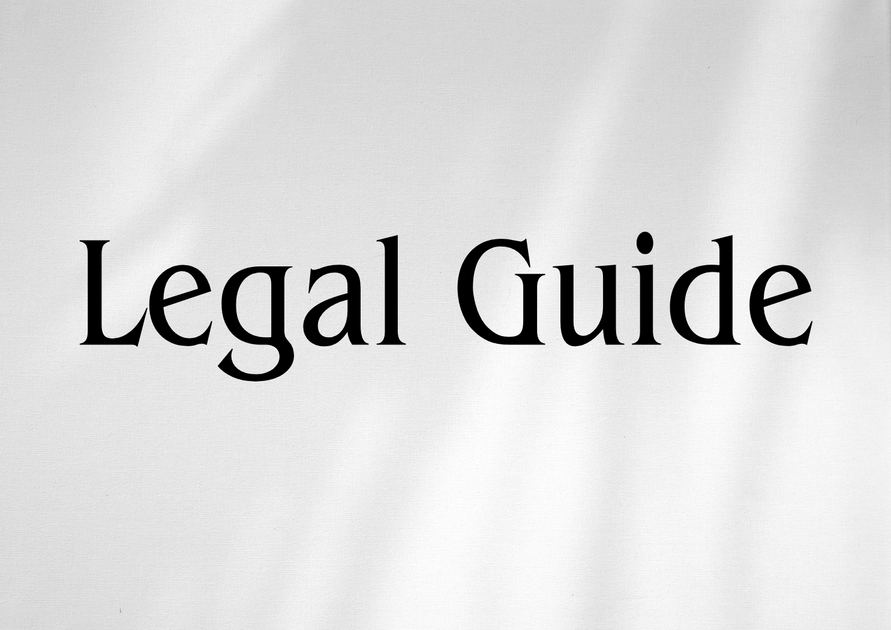Introduction
The transformative rise of artificial intelligence (AI) within the global legal profession is reshaping the practice of law and compliance management. Nowhere is this transformation more pronounced than in the United States, where legal firms and in-house teams are deploying advanced AI-driven tools for document review, contract drafting, legal research, and compliance monitoring. For UAE-based businesses and executives with US interests or operations, understanding both the practical benefits and the evolving compliance risks associated with AI in US legal practice has never been more crucial.
Recent updates to UAE federal law, including reforms to data privacy (Federal Decree Law No. 45 of 2021 on the Protection of Personal Data) and regulations on cross-border legal services, add new layers of complexity for organizations navigating US legal requirements. As our clients strengthen transnational business ties or engage in US-bound transactions, prudent knowledge of American automation practices and related legal risks becomes imperative to safeguard compliance and minimize exposure.
This comprehensive guide offers an expert analysis of AI’s impact on legal automation and compliance in the US, providing actionable recommendations for UAE organizations. Drawing from official US and UAE sources, we unravel the regulatory, ethical, and litigation risks from automation, elaborate on US compliance mandates, compare past and emerging legal frameworks, and outline robust strategies for navigating this rapidly changing landscape.
Table of Contents
- 1. Overview of AI Automation in US Legal Services
- 2. Core US Legal Frameworks for AI and Automation
- 3. Comparison of US and UAE Legal Approaches to AI
- 4. Impact and Risks for UAE Businesses with US Exposure
- 5. Compliance Strategies and Practical Guidance
- 6. Case Studies and Hypothetical Examples
- 7. Risk Mitigation and Governance
- 8. Conclusion and Best Practices
1. Overview of AI Automation in US Legal Services
Evolution and Current Use in US Legal Sector
AI-driven legal automation in the US encompasses applications such as predictive analytics for litigation outcomes, e-discovery in massive document populations, AI-powered contract review and drafting, compliance monitoring, and even risk assessments for client onboarding and due diligence. Tools like Relativity, Luminance, and Kira Systems are widely adopted, enabling vast efficiency gains and reduction in manual legal work. However, these advantages coexist with unique compliance risks, particularly when US legal services intersect with international or UAE-linked data and transactions.
Key Drivers of Automation
The primary motivators behind legal sector automation in the US include:
- Cost Reduction and Efficiency: Routine work—document review, standard contract analysis—is expedited by machine learning and language processing tools.
- Mitigation of Human Error: AI can detect inconsistencies and risks that would otherwise escape manual review.
- Regulatory Demands: US regulators increasingly encourage adoption of advanced risk-mitigation tools, especially in sectors like finance or healthcare (e.g., under the Sarbanes-Oxley Act, HIPAA).
- Client Pressure: Corporate clients demand faster, data-backed results with fewer billable hours.
2. Core US Legal Frameworks for AI and Automation
Federal Regulations and Judicial Guidance
The United States currently lacks a dedicated, comprehensive federal law targeting AI in legal services. However, several statutory and regulatory frameworks directly affect the deployment and compliance aspects of automation in law:
- Federal Rules of Civil Procedure (FRCP) – E-Discovery: Rules regarding the use of electronic evidence and discovery automation require adherence to proportionality and reasonableness (Rule 26(b)(1)).
- State-Specific AI Laws: States such as California, Illinois, and Colorado have passed data privacy and algorithmic risk regulations (see: California Privacy Rights Act, Illinois Biometric Information Privacy Act).
- Federal Data Privacy Regulation: While the US lacks a federal equivalent to GDPR or the UAE’s PDPL, sectoral laws such as the Health Insurance Portability and Accountability Act (HIPAA) and Gramm-Leach-Bliley Act (GLBA) regulate automation in sensitive areas.
- AI-Specific Guidance: The US Department of Justice, Federal Trade Commission, and American Bar Association have each issued opinions and best-practice guidelines regarding the ethical use of AI, focusing on transparency, accountability, and human oversight.
Judicial Precedents and Ethics Opinions
US courts are increasingly scrutinizing the use of AI in evidence discovery and expert analysis. Notable is the 2012 case Da Silva Moore v. Publicis Groupe, where predictive coding for e-discovery was judicially accepted—signaling a turning point for legal AI adoption.
Local Bar Associations (e.g., New York State Bar, California State Bar) have formalized ethical opinions on AI use, often emphasizing:
- Lawyer diligence and competence (Model Rule 1.1, American Bar Association)
- Client confidentiality and data security (Model Rule 1.6)
- Non-delegation of legal judgment solely to AI tools
3. Comparison of US and UAE Legal Approaches to AI
While the UAE and US both encourage technological innovation within legal practice, fundamental differences exist between their regulatory philosophies. The UAE’s approach to AI is currently shaped by federal decrees—including the UAE Cabinet Resolution No. 21 of 2022 Regulating the Use of Artificial Intelligence in Judicial and Notarial Work, and Federal Decree Law No. 45 of 2021 on the Protection of Personal Data (PDPL).
The table below compares key dimensions:
| Aspect | US Law | UAE Law (2025 updates) |
|---|---|---|
| AI Legal Regulation | No comprehensive federal framework; patchwork of state and federal sectoral laws | Cabinet Resolution No. 21 of 2022; PDPL mandates explicit consent and legal basis for AI-driven data processing |
| Data Privacy | Sector-specific federal laws (HIPAA, GLBA); varied state-level privacy laws | Federal Decree No. 45 of 2021; PDPL applies to personal data processing across UAE and cross-border transfers |
| Legal Ethics Concerning AI | ABA Model Rules; local state bar ethics opinions guide AI use, require competence and confidentiality | UAE Ministry of Justice circulars and professional conduct codes for legal professionals; explicit AI ethics provisions |
| Cross-Border Data Transfers | Permissible, but subject to state/federal laws and contractual controls | PDPL mandates adequate protection, government authorization for transfers outside UAE |
Visual Suggestion
Recommended: Insert a compliance checklist graphic for US-UAE legal automation, listing mandatory consent, data localization, and risk assessment steps.
4. Impact and Risks for UAE Businesses with US Exposure
Practical Implications
UAE organizations engaging in US operations—whether through direct investment, partnerships, or contractual work—must reconcile differing standards. Risks arise where US-facing legal automation handles UAE-origin personal or business data or when AI-driven decisions affect UAE clients or employees. Neglecting to align US automation with UAE’s data and AI laws may trigger regulatory scrutiny and punitive actions under both jurisdictions.
Emergent Risks
- Data Privacy Breaches: Automated e-discovery tools deployed by US counsel may not meet the explicit consent requirements under the PDPL, exposing UAE firms to liability.
- AI Transparency and Explainability: US regulators focus on ‘reasonableness’ but do not universally mandate algorithmic transparency, unlike recent UAE standards calling for AI systems’ explainability in legal processes (see: Cabinet Resolution No. 21 of 2022, Art. 6).
- Unauthorized Data Transfers: AI automation operating in the cloud could involve exporting sensitive data outside UAE borders without proper authorization, violating PDPL (Arts. 22–25).
- Liability for Automated Decisions: Deployment of US-developed AI systems in UAE operations may shift risk of discriminatory or erroneous AI decision-making to UAE entities if not properly managed or disclosed to clients.
Visual Suggestion: Implement a ‘Top 5 Compliance Risks’ infographic tailored for UAE entities using US legal AI platforms.
5. Compliance Strategies and Practical Guidance
Summary of Best Practice Compliance Steps
- Comprehensive Vendor Assessment: UAE businesses must conduct thorough due diligence on US legal automation providers to verify data handling, algorithm transparency, and security measures.
- Custom AI Governance Frameworks: Develop internal protocols in line with both the UAE PDPL and sectoral US regulations to govern the use and oversight of AI tools. Address key controls such as regular auditing, documentation, and human supervision of all critical AI outputs.
- Contractual Safeguards: Insert explicit data protection and compliance clauses into contracts with US legaltech vendors, detailing jurisdiction-specific obligations (cross-border transfer rules, data residency, consent requirements).
- Record-Keeping and Audit Trails: Maintain detailed logs of automated legal processing activities to demonstrate compliance in the event of regulatory inquiry by UAE or US authorities.
- Employee Training and Policy Updates: Continually educate in-house legal and compliance teams about evolving US and UAE requirements, emphasizing their duty to exercise independent legal judgment and not rely solely on AI-generated outcomes.
Compliance Checklist Table
| Step | US Law Requirement | UAE Law Alignment |
|---|---|---|
| Obtain data subject consent | Implied or notice-based, varies by sector | Explicit, informed, and documented consent required (PDPL Art. 6) |
| Vendor security diligence | Required by contractual/statutory means | Mandated by UAE Cabinet Resolution No. 21 of 2022, PDPL Arts. 35-41 |
| Data transfer controls | Depends on state/federal law | Government authorization and adequacy assessment (PDPL Arts. 22–25) |
| Ongoing monitoring and audit | Mandated for listed sectors (finance, healthcare) | Required for any automated legal processing (Cabinet Resolution No. 21 Art. 9) |
6. Case Studies and Hypothetical Examples
Case Study 1: UAE Corporation Under US Litigation
A Dubai-based corporation is involved in a US federal lawsuit. US counsel proposes extensive use of predictive coding for e-discovery, expecting to process emails and contracts hosted on UAE servers. Under the UAE PDPL, data transfers to the US would necessitate specific consents and possibly prior government notification or approval, especially if records include sensitive employee or customer information. Absent proper controls, the corporation may face penalties both in the UAE and the US, along with reputational harm.
Case Study 2: AI-Driven Contract Risk Assessment
An Abu Dhabi firm implements a US-developed AI tool to scan supplier contracts for potential anti-bribery and anti-money laundering clauses before onboarding for American clients—a practice increasingly common under US FCPA risks. However, the UAE PDPL requires that the underlying data processing reside on protected infrastructure and that the firm disclose all AI decision-making logic to both staff and affected clients. Failing to map and explain AI logic not only exposes the firm to local compliance failings but also undermines enforceability of contract risk assessments in US disputes.
7. Risk Mitigation and Governance
Developing a Proactive Governance Program
UAE organizations should establish a cross-jurisdictional compliance committee, bringing together legal, compliance, IT, and risk management experts to regularly review US legaltechnology innovations, conduct risk impact assessments, and update controls for AI usage. Special consideration should be given to the following:
- AI Explainability: Adopt only those AI tools that meet explainability standards under both UAE and (where possible) US state-level guidance. Document all AI logic, especially when used in legal document review or analysis for UAE clients.
- Data Minimization: Limit the scope of data processed by US automation providers strictly to what is necessary and with due attention to data localization requirements under UAE law.
- Automated Decision Appeals: Implement client-facing protocols granting the right to contest or review AI-driven legal decisions, in line with emerging best practices from the UAE Cabinet’s AI guidelines.
Visual Suggestion
Propose a process flow diagram illustrating the recommended approval steps for engaging US-based legal automation in UAE companies: Vendor vetting → Data mapping → Legal sign-off → Regular audits.
8. Conclusion and Best Practices
The convergence of US legal automation and UAE data protection regulations places a premium on diligent, expertise-driven compliance strategies for UAE businesses. AI-driven legal services in the US present undeniable value in speed and cost-effectiveness; however, misalignment with UAE regulatory norms risks significant penalties and loss of trust. The emerging global standard calls for robust due diligence, contractual safeguards, meticulous record-keeping, and continuous monitoring of technological and regulatory developments.
UAE organizations—and their legal advisors—must stay ahead of both US and UAE regulatory trajectories. As both jurisdictions update and strengthen their legal frameworks in 2025 and beyond, organizations that invest early in adaptive compliance mechanisms, cross-jurisdictional legal counsel, and transparent AI governance will position themselves as leaders in safe, innovative legal practice. For tailored assistance in auditing your legaltech stack or negotiating US-facing AI legal contracts, we encourage you to contact our UAE legal consultancy team for a confidential assessment.




